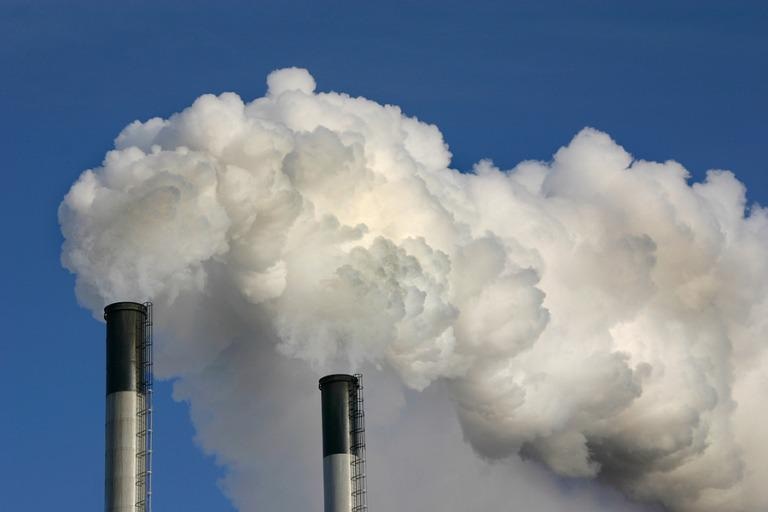A new study that is being presented at the 2022 Euroanaesthesia has found that long-term exposure to air pollution has been linked to a higher risk of severe COVID-19.

Image Credit: European Society of Anaesthesiology and Intensive Care.
A German study has discovered that people living in counties with greater levels of pollutant nitrogen dioxide (NO2) were more likely to require ICU care and mechanical ventilation if they had COVID-19.
Long-lasting exposure to NO2, a gas liberated into the air when fossil fuels are subjected to burning, can cause detrimental effects on the lungs. This consists of damage to the endothelial cells, which play a main role in oxygen transfer—the transfer of oxygen from inhaled air to the blood.
Even though the links between air pollution and Covid have been examined before, few studies have concentrated on the intensity of the disease or have considered population density. This underlies health conditions and other factors which tend to affect the disease’s impact.
Dr. Susanne Koch, from the Department of Anaesthesiology & Intensive Care, Charité – Universitätsmedizin Berlin, Berlin, Germany, and collaborators explored the effect of long-lasting air pollution on the requirement for mechanical ventilation and ICU treatment of COVID-19 patients.
The air pollution data gathered from 2010 to 2019 was utilized to assess the long-term yearly mean level of NO2 for every county in Germany. This varied from 4.6 µg/m³ to 32 µg/m³, with the highest level in Frankfurt and the lowest level in Suhl, a small county in Thuringia.
The German Interdisciplinary Association for Intensive Care and Emergency Medicine (DIVI) registry, which was set up to track ICU capacity at the time of the pandemic, was used to provide data on how many COVID-19 patients in each hospital wanted mechanical ventilation and ICU treatment.
The period that was studied spanned from April 16th, 2020, when the reporting of data to the DIVI registry became mandatory, to May 16th, 2020. This was when lockdown restrictions were lifted. 392 out of Germany’s 402 counties were also a part of the analysis.
Demographic factors like age and sex distribution, population density, and socio-economic factors, and health parameters, such as pre-existing health conditions which can affect COVID-19 severity, were all prepared.
The study discovered that there was a bigger need for mechanical ventilation and ICU treatment of COVID-19 patients in counties with greater long-term yearly mean NO2 levels.
Every 1 µg/m³ increase in long-lasting annual mean NO2 concentration was linked to a 3.2% increase in various ICU beds that have been occupied by COVID-19 patients and a 3.5% rise in the number of COVID-19 patients who were in need of mechanical ventilation.
Normally, there was a need for 19 ventilators and 28 ICU beds for COVID-19 patients in each of the ten counties having the least long-term NO2 exposure, during the month studied. This makes a comparison of an average of 102 ventilators and 144 ICU beds in the ten counties with the greatest long-term NO2 exposure.
The scientists stated that while their outcomes do not prove causation, there is a possible biological explanation for them.
ACE-2, the protein that the COVID-19 virus straps to while entering the cells, has several primary roles in the body. This is inclusive of helping control the activities of angiotensin II. This is a protein that increases inflammation. Put differently, ACE-2 “put the brakes” on inflammation.
But when the SARS-CoV-2 virus fixes itself to the ACE-2, these brakes are eliminated. Also, air pollution “releases the brakes” and so the combination of COVID-19 and long-lasting air pollution exposure could result in more severe COVID-19 and highly severe inflammation.
The scientists add that their outcomes are in accordance with other recent studies which have connected long-term NO2 exposure. This has a higher COVID-19 incidence and a greater death rate.
Long-term exposure to NO2 long before the pandemic may have made people more vulnerable to more severe COVID-19 disease. Exposure to ambient air pollution can contribute a range of other conditions, including heart attacks, strokes, asthma and lung cancer and will continue to harm health long after the COVID-19 pandemic ends.
Dr Susanne Koch, Department of Anaesthesiology & Intensive Care, Charité – Universitätsmedizin
Koch added, “A transition to renewable energy, clean transportation and sustainable agriculture is urgently needed to improve air quality. Reducing emissions won’t just help to limit climate crisis, it will improve the health and the quality of life of people around the world.”
Journal Reference:
Huang, G., et al. (2022) Long-term exposure to air pollution and COVID-19 incidence: A multi-country study. Spatial and Spatio-temporal Epidemiology. doi.org/10.1016/j.sste.2021.100443.